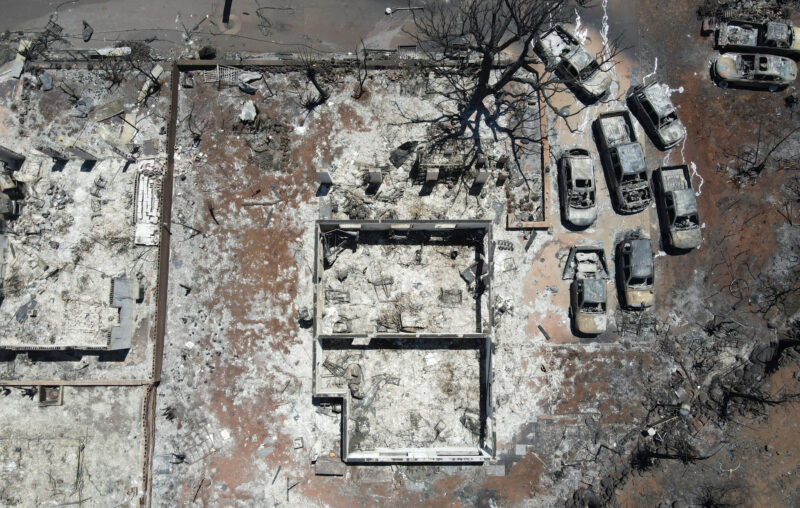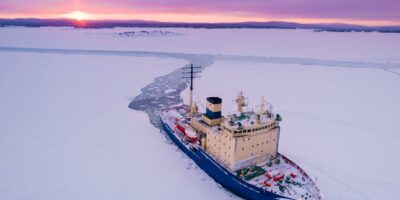Blame, Trade-Offs, and the Maui Wildfires

A week after the devastating wildfires on Maui, accusations for who and/or what was to blame for the disaster are sweeping through the media faster than the flames that destroyed the historic town of Lahaina. The desire to seek blame is a natural human instinct. Indeed, finding fault can be useful in identifying the source of serious problems that we hope to avoid in the future. However, as punitive action is likely to follow, it is important that we “get it right” when it comes to assigning blame properly.
Political economy may be of assistance here, particularly if we consider the multi-dimensional nature of the policy decisions and trade-offs that were imposed on key actors in the events that unfolded.
What or Who Was to Blame?
The fire that eventually destroyed Lahaina appears to have started just after midnight (Hawai’ian time) on August 8. While it was determined initially to be contained by around 9:00 am, a flare-up occurred later that afternoon and spread quickly into the town. The bulk of the damage to Lahaina occurred that evening after 5:00 pm.
Wasting no time in pointing fingers, media pundits began to blame global warming within 24 hours (see here and here). Hawaii’s governor Josh Green asserted this cause shortly thereafter.
Fortunately, cooler heads began to prevail and other causes for the conflagration were offered, including the presence of invasive grasses that are more prone to fire and specific meteorological patterns that produced high winds that are not uncommon on the islands this time of the year. University of Washington meteorologist Cliff Mass provided a detailed explanation of the short-term weather (not long-term climate) conditions that created a perfect storm for the fires. Ironically, a wetter and cooler spring in Maui (not predicted by the climate disaster models) allowed for extensive growth of grasses that became highly flammable in the drier summer season.
While the presence of dry grass and strong winds explain the what of the disaster, the question of whether any human action (i.e., the who) was responsible still remains to be answered.
As of August 19, the most likely and proximate explanation for how the fire started relates to sparks from powerlines that were blown over during the high wind event. While accidental catastrophes are a reality of life that are difficult to avoid entirely, accusations that the powerlines were not properly maintained came to the forefront quickly.
In a Wall Street Journal article published on August 17, Katherine Blunt revealed that Hawaiian Electric, the public utility serving Maui, had known about the inadequate condition of their utility poles for at least four years. The devastating Camp Fire disaster in Paradise, California in 2018 and resulting lawsuits served as a warning for numerous electric utility companies in fire-prone regions (of which the western shores of Maui is one).
So, it seems now as if a villain to this tragedy has been identified: Hawaiian Electric. That company has quickly become the “who to blame.” Granted, others have been enveloped in the “blame game” regarding the response to the disaster. Maui’s Emergency Management Agency chief resigned on August 18 after heavy criticism for not issuing a warning to Lahaina residents quickly enough. When it comes down to the initial cause of the fire, however, it appears that Maui’s utility company was the entity most responsible for the disaster.
Political Economy Widens the Scope of Blame
It is becoming clear that Hawaiian Electric (HE) shares some responsibility for the fire. The inevitable lawsuits will determine how much of that responsibility the company will shoulder legally. But might there be more blame to be distributed?
The aforementioned Wall Street Journal article on the role of HE revealed a valuable clue as to why the company may have been so slow in updating their utility poles and other infrastructure:
Since PG&E’s bankruptcy [resulting from the Camp Fire tragedy], Hawaiian Electric has made reference in regulatory filings to the risks of power-line fires, but it waited years to take significant action, documents and interviews show. During that period, the company was undertaking a state-mandated shift to renewable energy [emphasis added].
Read that again; it’s important. Hawaiian Electric knew about their aging utility line infrastructure, but they were trying to comply with government mandates to shift to sources of sustainable power.
While it is difficult, if not impossible, to read the intentions of other people, my best guess is that none of the executives at HE wanted their powerlines to cause a major wildfire that killed hundreds. In a perfect world with unlimited resources, those executives most likely would have wanted to replace aging utility poles, trim away flammable grasses, and invested in geothermal power technologies.
But we don’t live in a perfect world. And we don’t have unlimited resources (particularly in the short-term). As such, we need to prioritize our actions and make trade-offs.
If the leaders of HE knew about the problems with their aging infrastructure (and particularly the utility poles) why didn’t they take action? The answer may be that as a public utility, responsible to a governing board and political pressure, they faced repeated calls to engage in policies that were on the top of politician’s agendas.
Replete with beautiful beaches, mountains, and lush forests, Hawaii not surprisingly has a very strong environmental movement. With “climate change” making headlines daily, and efforts to “save the planet” manifesting in policies as trivial as banning plastic straws, it is perfectly understandable that HE’s board of directors would divert funding and manpower to efforts that played well in the media.
Government mandates to invest in renewable energy meant that something else would have to be de-emphasized. That something appears to have been utility pole maintenance. There is a certain cost-benefit logic to this. If you know that you need to replace poles and powerlines, but are not sure where to start, just wait until one set of poles tumbles over and then replace those. (Living in a region with frequent windstorms and above-ground powerlines, I know this logic well.)
This indicates a much more complicated story when it comes to assigning blame. Although with 20/20 hindsight we can see that utility poles should have been shored up to withstand greater winds, the political pressure to invest in sustainable energy made it more difficult to address this issue with the limited resources HE operates under. (There may have also been the ubiquitous COVID-era staff shortages that have plagued nearly every industry. Simply put, telling everybody to stay home and even paying people to do so could have put a pinch on HE’s available workforce.)
As an aside, I should note that HE executives may be culpable in the spread of the fire with their decision to not shut down power early in the windstorm. Whether that was considered and what other factors – including political pressure – played a role will likely be revealed in the legal cases that will ensue. Nonetheless, if blame is placed on HE for not updating their utility lines, the wider context of the trade-offs that there were impelled to make should also take center stage.
Politics Is Frequently One-Dimensional, Trade-Offs Neglected
If there is a broader lesson to be learned here it is that governmental policy decisions have consequences that go beyond the immediate issue they are addressing. Pushing resources in one direction means that resources will not be available in others.
Too often (if not always), politicians will stump on the need to solve some hot topic issue of the day. They may very well put a price tag on the efforts to solve the going problem. This is how policy is conducted in one-dimension. If we want to reduce automobile carbon emissions, we need to subsidize electric vehicles. That will cost, let’s say, $50 billion. Problem solved, right?
The key question, though, is what alternative uses could that $50 billion gone towards? What are the opportunity costs? The difficult trade-offs that need to be made? That is the multi-dimensional question that politicians often avoid. (As Sean Mullholland and I recently argued, mandating the production of electric vehicles may be killing the entrepreneurial incentive to create alternative fuel vehicles that are easy to fuel and operate.)
Parsing out problems and offering simple solutions is the currency of electoral politics. While trained bureaucrats may be tasked with conducting cost-benefit analyses of different policy options, weighing the trade-offs, and then sending their reports off to legislatures to consider, the temptation of politicians to ignore those analyses is high. Making big and simple promises is the easy part of politics. Telling constituencies that there may be difficult and painful trade-offs is difficult.
Policy is best considered in light of trade-offs. Policy is multi-dimensional. Unfortunately, politics is one-dimensional. Finding the one villain to blame for a tragedy makes for good political theater and can whip up votes for elected officials. Unfortunately, by ignoring the trade-offs that their own policies create, those same politicians may escape the portion of the blame that they rightfully bear.
The citizens of Maui deserve a full accounting of the tragedy that befell them. Thinking honestly about the consequences of public policy and the trade-offs that resulted is what their elected leaders owe them.









